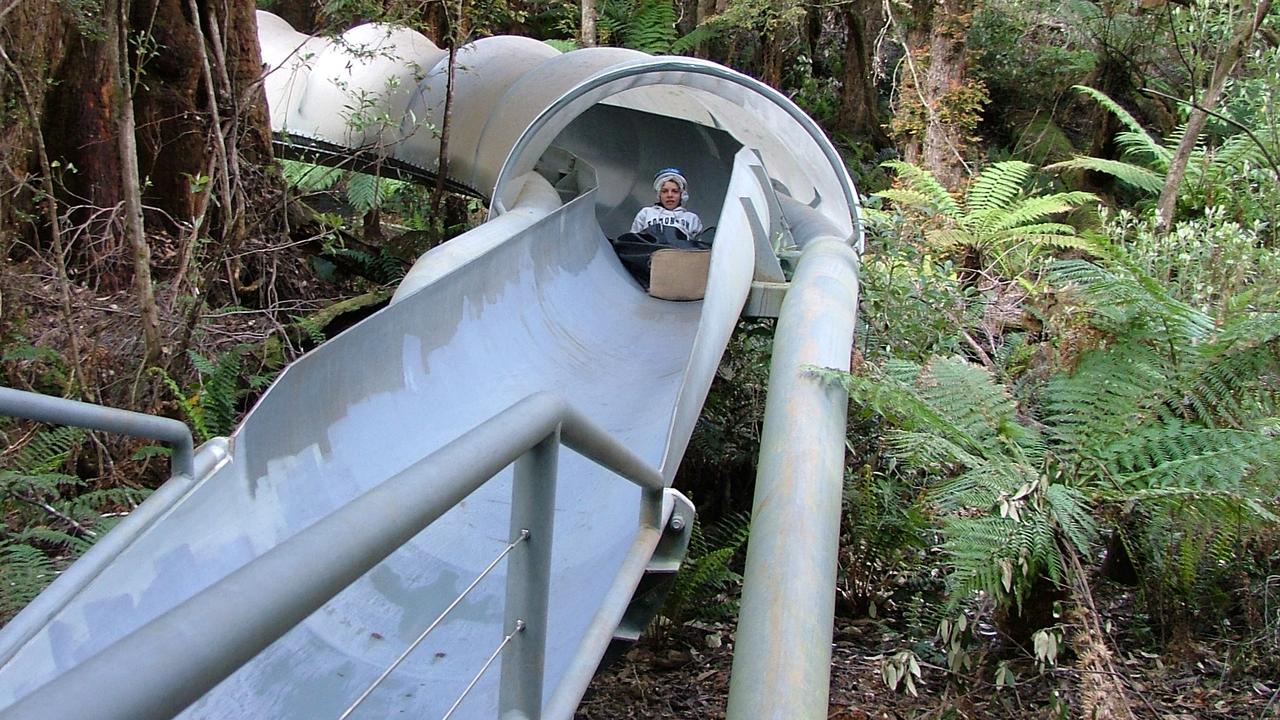Places to surf before you die: Shipstern Bluff
TASMANIA is home to a wave that is far gnarlier than anything on the Australian mainland that for years it was considered unsurfable, writes, Sean Doherty.
ONCE known as Devil's Point, Shipstern Bluff's ferocity seen at close quarters will leave little doubt that this hellish right-hander could indeed be a crossover point to the Underworld. For decades this wave was more myth than reality, as no one had even considered surfing it.
While its sheer brutality kept surfers out of the water, its splendid isolation at the bottom of Tasmania ensured it stayed off the surfing map.
Its latter-day pioneering has been one of the great stories of modern surfing, though Shipstern is still regarded as a relatively secret spot (as the vandalised sign at the top of the track will attest to).
Gallery: Waves to surf before you die »
Cold, uninhabited, and lashed by the Roaring 40s, the Gold Coast this ain't. Named after the headland that towers over the wave like a fossilised Titanic, Shipstern Bluff is as raw a surfing experience as you could wish for.
Two-hundred-metre cliffs rise vertically out of the ocean, and if you are looking for a reassuring hint of civilisation you won't find it. The only way in and out of here is either by boat or on foot, and the isolation of the place gives it a sinister vibe - not helped by the fact that the waters here are patrolled by some of the biggest white sharks you could ever hope to avoid.
But in a world where all the best waves are being wantonly developed to the back teeth, to see a wave still as beautiful as it was millennia ago is a breath of fresh air. The wave is so heavy, and the walk in such a pain, that it doesn't attract big crowds, as a result of which the local guys are still pretty mellow. They figure that more surfers in the water lowers their chances of getting chomped.
Rumours of a wave in Tasmania far gnarlier than anything on the mainland first drifted across Bass Strait in 2000. Up until that point the true, awful potential of Shipstern Bluff was known only by the local guys who'd already surfed it (at that stage about three of them).
Back in 1997, Tasmanian surfer Andy Campbell, who would become synonymous with the wave in coming years, became the first to surf the place.
"Sitting on my surfboard, alone, my legs felt weak from apprehension and fear as they dangled in the cold water. Could anyone ride the infamous Tasmanian wave? Was I the first to try?" Campbell asked himself. "From that day my surfing took a radical new direction. I had purpose, direction, and my arena was right in my backyard. Pioneering one of the world's heaviest waves has so far been an unforgettable journey that is still far from over."
In late 2000 the first visiting mainlanders surfed Shipstern, and the following year pro surfers Kieren Perrow, Mark Mathews and Drew Courtney scored the place at a frightening 10-12 feet while on a Tracks magazine photo trip with Tasmanian photographer, Sean Davey. And while the wave's location was never divulged, the images of that day were flashed around the world and the surf media came down with a feverish case of Tasmania.
"Our local guide didn't exactly inspire confidence," recalls Perrow. "He looks at the line-up and goes, 'You guys shouldn't be going out. I don't think it's surfable.'"
Halfway through the session, KP was wishing he'd listened. "I remember being stuck in a frothy current 300 metres from the safe dry rock, bleeding from a third piece of missing flesh, and I was trying hard not to think of myself as food."
If you've made the commitment to venture down to Tasmania, and if you've made the commitment to jump into the black, sharky waters, then you've only got one commitment left to make - but it's the big one. Taking off on a wave at Shipstern can be a real lottery.
"You can take off on an eight-footer on the outside ledge," says Perrow, "and it will be a 15-foot barrel on the inside. You just don't know what you're going to get."
The abrupt force of Shipstern draws so much water off the reef, so quickly, that the wave face is often a facsimile of the craggy reef below. On a big swell with a low tide, and full sunlight for dramatic effect, the wave can look like a living Dali painting as it warps, twists and devours itself. But amidst the madness lies one of the biggest, throatiest barrels of all, and this is what many of the world's best surfers travel to Tassie to pit themselves against.
Shipstern is open to everything the Southern Ocean can dish out, so swell is generally not a problem. But wind is: the secret is to look for a big 'H' parked over Tasmania on the weather map.
"The wave at the end of the world" might not be everyone's piece of cake, but for the hardcore surfer it's one stern test of internal fortitude, and offers a chance to be barrelled like you've never been barrelled before. And scoring the barrel of your life in this silent, ancient arena will turn a classic surfing moment into something undeniably cathartic.
The Pilgrimage: 50 places to surf before you die, edited by Sean Doherty, is published by Penguin Books on the Viking Imprint and is available in all good bookshops for $49.95.



